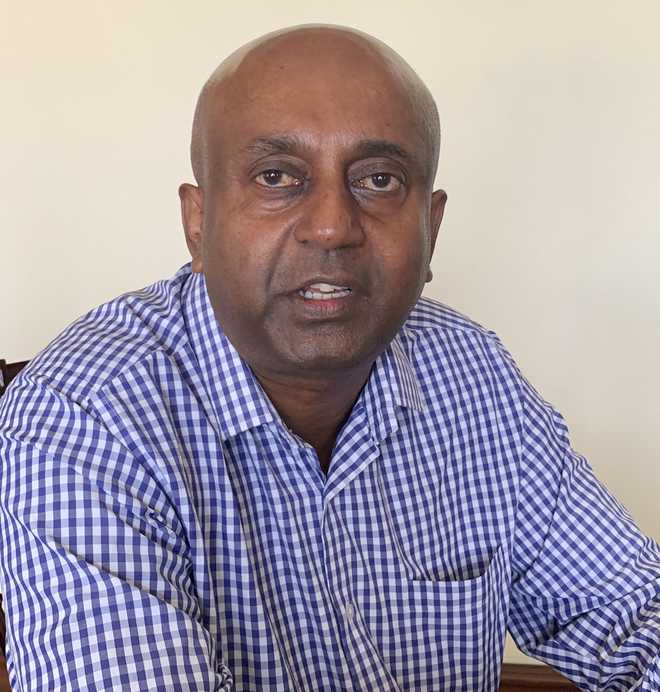Naveen S Garewal
Tribune News Service
Hyderabad, March 4
Nearly 40 million people in India, including 1.6 million children, are blind or visually impaired due to uncorrected refractive error.
Many from among the underprivileged section are unaware that this is correctable. The World Health Organisation (WHO) that has given these numbers also suggests that a majority of these people live in villages and tier 4 cities where they don’t have access to glasses.
Vinod Daniel, the CEO of India Vision Institute (IVI), a non-profit organisation functioning through a joint initiative of the LV Prasad Eye Institute here and the Brien Holden Hospital, Sydney, that works with underprivileged school children across 18 states said simply providing eye glasses to 2.2 lakh people over the last six years has improved levels of rural education, reduced crime and prevented accidents among the elderly.
In an interaction with The Tribune, Daniel revealed startling facts that are directly related to poor vision. As against a national requirement of 1.25 lakh optometrists in the country, India has only 40,000 and that too mostly in urban areas. Studies, he said, have shown that merely providing the correct prescription glasses increased productivity by 34 percent, raised earning potential by 20 percent and reduced accidents among the elderly by 7 times.
IVI that works for screening vision among school children has recorded that nearly 10 per cent school children need prescription glasses. In the Northeast, the figures are as high as 20 per cent. The non-profit organisation has been involved in vision screening in states like Delhi, Rajasthan, Gujarat, Odhisha, Jharkhand, Assam and Meghalya besides others. In Punjab, Haryana and Himachal too IVI has collaborated for providing training and capacity building with medical institutions and local hospitals.
Giving out specifics Daniel said India was home to about 20.5 per cent of the world’s blind, 22.2 per cent of the world’s low-vision population, and 21.9 per cent of those with vision impairment according to the study by Pascolini D, Mariotti SP published in the Global Estimates of Visual Impairment. According to Avoidable Blindness India, a study group, about 88. 2 per cent of blindness in India was avoidable.
Outlining IVI’s work in vision screening and capacity building programmes in north India, notably in Haryana and Punjab, Daniel said in Haryana a campaign screened around 10,000 children in Rewari, in addition to a comprehensive hands-on capacity building workshop in Rohtak and a workshop on ocular prosthesis and a talk on the role of optometrists in public health, both at Amity University in Gurgaon.
A workshop in the series of capacity building for ophthalmic officers was held at Sankara Eye Hospital, Ludhiana, covering a range of topics, including essentials of refraction, ophthalmic dispensing, soft skills and entrepreneurship development and hands-on practical sessions. Yet another workshop on Binocular and Low Vision was organised at the Chitkara University in Chandigarh.
IVI has suggest a model to various state government that calls for a routine eye examination among school children of class 3 and then class 9 to pick up refractive error early to prevent blindness. The IVI has worked with bidi workers, fire cracker workers and in gypsy colonies and found that a mere expense of Rs 50 per person could eradicate blindness.
Unlock Exclusive Insights with The Tribune Premium
Take your experience further with Premium access.
Thought-provoking Opinions, Expert Analysis, In-depth Insights and other Member Only Benefits
Already a Member? Sign In Now











